When I go for my annual check up, the one thing I dread is getting weighed. Stepping on the scale and getting confirmation of what my waistband has been telling me always makes me wince. But getting my height measured has never been a problem. I step right up, shoulders back, stomach in, nice and tall and proud. At my last doctor visit, I did that same routine, expecting to hear the same results. But this time, my GP informed me I had shrunk a whole half inch. I was robbed!
Getting shorter is one of the indignities of aging, but there are ways to compensate.
No longer can I claim I’m (almost) tall enough to be a fashion model or feel superior to my big brother because I have a height advantage. Those cute flats I bought for dates I hope to go on were probably a waste of money. Chance are, I won’t exactly tower over whomever is the lucky fella.
Still, I have it pretty good in the height department. At 5 feet, 6 inches tall these days (au revoir 5 feet, 6 and a half!), I’m a full three inches taller than the average American woman. When I get upset about my looks, which thank goodness is not as often as in my younger years, I calm myself by thinking, “at least I’m tall.”
That said, I do recognize that getting shorter is one of the indignities of aging. It will happen to all of us, and there’s virtually nothing we can do to stop it, says Dr. Frank Schwab, spine service chief at the Hospital for Special Surgery in New York. There are, however, relatively easy ways to compensate.
Read More: What Every Woman Needs to Know About Osteoporosis Meds
The Source of Shrinkage
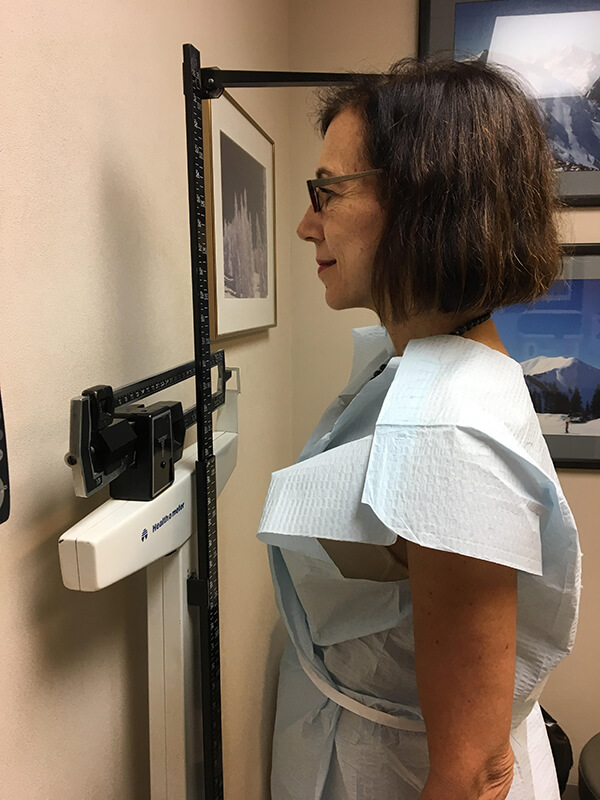
The author measuring her shrinkage at a doctor appointment.
So why the shrinking? Like so many things in life, it boils down to water. The inner part of the cushiony discs between our vertebrae are spongy and gelatinous. As we age, the chemical composition of the discs changes very gradually and retains less water. “We all lose some of the water content in the disc, so the discs settle down,” Schwab explains. “And if you think of the whole spinal column, and you think just a few millimeters but across an entire spine, it all adds up, so we get shorter with age.”
In some cases, losing stature is due to osteoporosis. Your vertebrae can get so weak that they develop microfractures, which cause the bones to settle or collapse, Schwab says. Fortunately, it’s not the case too often. If caught early, osteoporosis can be treated with medication to stop the bone loss from progressing. All women should be tested for osteoporosis starting at age 65, according to recommendations from the U.S. Preventive Services Task Force. If you have risk factors such as a history of cancer, like I do—I had breast cancer—you should get a bone-density scan sooner, doctors say. I got my first scan when I was 51 and have had several since. It’s quick and painless, much like getting an x-ray.
I don’t have osteoporosis, but I fear it. My favorite older cousin, a second mother to me, was bent in half for the last decade of her life due to the disease. Taking vitamin D and calcium can help maintain healthy bones. Women ages 51 to 70 should take 1,200 mgs of calcium and 600 units of Vitamin D daily, according to the National Institutes of Health. “Everybody should be taking vitamin D and calcium, period,” says Joseph Lane, chief of the Metabolic Bone Disease Service at the Hospital for Special Surgery. Weight-bearing exercises can also help maintain healthy bones; I’ve been doing them since I was 40.
Do You Shrink as You Get Older? The Big Bend
But wait, there’s more! We’re not just shrinking: We might be starting to stoop forward because of a condition called kyphosis, an exaggerated, forward rounding of the back that occurs mostly in older women, according to the Mayo Clinic. The thoracic, or middle, spine naturally curves slightly outward. As the discs in that part of the spine compress with age, they become more wedge-shaped and the curve can become more prominent. Severe cases are known as a dowager’s hump. If that’s your issue, your doctor can advise you.
People typically lose about half an inch each decade.
Losing stature is gradual. It begins as early as our 30s, but it typically starts in our 50s or 60s and is a slow, continuous process. People typically lose about half an inch each decade. After the age of 80, it’s possible for both men and women to lose another inch, according to a website for Medicare recipients. My father, almost 99, is at least four inches shorter than the dad I used to know. My mother, who died at 92, not only shrank three or four inches, but she also stooped forward.
Which makes me wonder, Should I buy capri pants—i.e. shorter trousers—now? “You can’t change your genetics. Some people will get shorter faster than others, and some people will be curved forward more than others. It’s very hard to change that,” Schwab says.
Read More: Why Frozen Shoulder is a Feminist Issue
Short-Circuiting Shrinkage
But there are ways we can compensate. I can, for instance, change how I stand. My posture is not the greatest. When I catch my reflection in a window, the woman I see is slouching. Now that I’m shrinking, I’m motivated to stand up straighter. Hello, exercise: Dr. Schwab recommends doing strengthening exercises for muscles in the back and buttocks. They control how much we learn forward, he says. A strong back can counteract the forward pull of the spine.
A strong back can counteract the forward pull of the spine.
I turned to my niece, Brenda Kramer, 27, a personal trainer and CrossFit instructor in Los Angeles, for advice. The core comes first. “You need to have those core muscles strong enough to support you in whatever exercise you are going to be doing,” she says. In addition to doing core exercises for stability, she suggests squats, dead lifts, and bridges where you lie on your back, squeeze your butt and “punch your hips to the sky.” I like going heavy with the weights, but my niece says it’s not necessary. “You don’t need to go super-heavy to train your back or your butt to make them stronger,” she says.
For people with serious posture problems related to kyphosis—I am grateful this is not the case for me—there are exercises intended to help offset curving forward. I found some programs at Livestrong and Healthline.
I’m also contemplating taking up yoga, especially after speaking with Lara Warren, 50, a senior certified Iyengar yoga teacher in New York who has worked with women concerned about their height. Iyengar yoga emphasizes complete alignment of the body, mind, breath, and soul. Nice! It starts with standing, by rooting your feet to the ground and pulling up through your body in a pose, or asana, known as tadasana, Sanskrit for mountain pose. “Through practice of asana, we are bringing consciousness to every cell of the body. We don’t have to succumb to gravity,” Warren says. For women who know their way around a yoga mat, Yoga Journal has numerous exercises targeted at improving posture.
The Art of Illusion
For fashion tips to help make a person look taller, I phoned a friend from my professional life, Adam Glassman. He’s the style editor of O, The Oprah Magazine, and has dressed Ms. Winfrey for countless cover shoots. Oprah, by the way, is 5 feet, 7 inches tall. “She hasn’t shrunk at all yet,” Glassman says. Nevertheless, she goes for monochromatic dressing which creates a tall, lean look, he says.
Pants should be so long they almost hit the floor; no pleats allowed.
I don’t think about my torso much (thighs and stomach, yes), but it’s key to the illusion of height. You want to make it look shorter so your legs look longer, Glassman says. That means high-waisted pants and skirts and form-fitting dresses, none of which I own—or at least not yet. Pants should be so long they almost hit the floor; no pleats allowed. For the longest line, they should fit close through your hips and legs until the knee, when it’s okay to have them flare.
Shoes are critical. “You really want a pointy shoe that makes your foot look longer. From the tips of your toes to top of your head, every little inch or half an inch makes a difference,” he tells me. I didn’t have the heart to say I already wear a size 11 and that my foot looks plenty long enough without enhancement.
Here’s how else Glassman recommends creating the impression of more height: Scoop necks, V-necks, wearing the same color from head to toe, short jackets and cardigans, vertical stripes, and hose to match your shoes. Don’t wear hose? Then shoes should match your skin tone.
The day I spoke with Glassman, I had to go to an event. I wore black tights to match my skirt and broke out my black heels. My top was a little long for my torso, but it did have a nice scooped neck. I felt taller—possibly a solid 5 foot, 7 inches. And that was just the point.

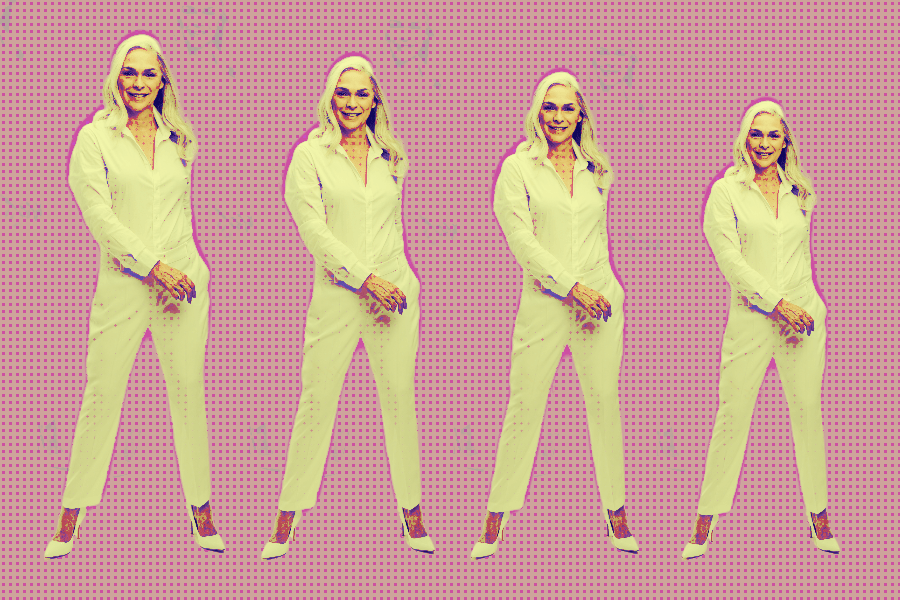
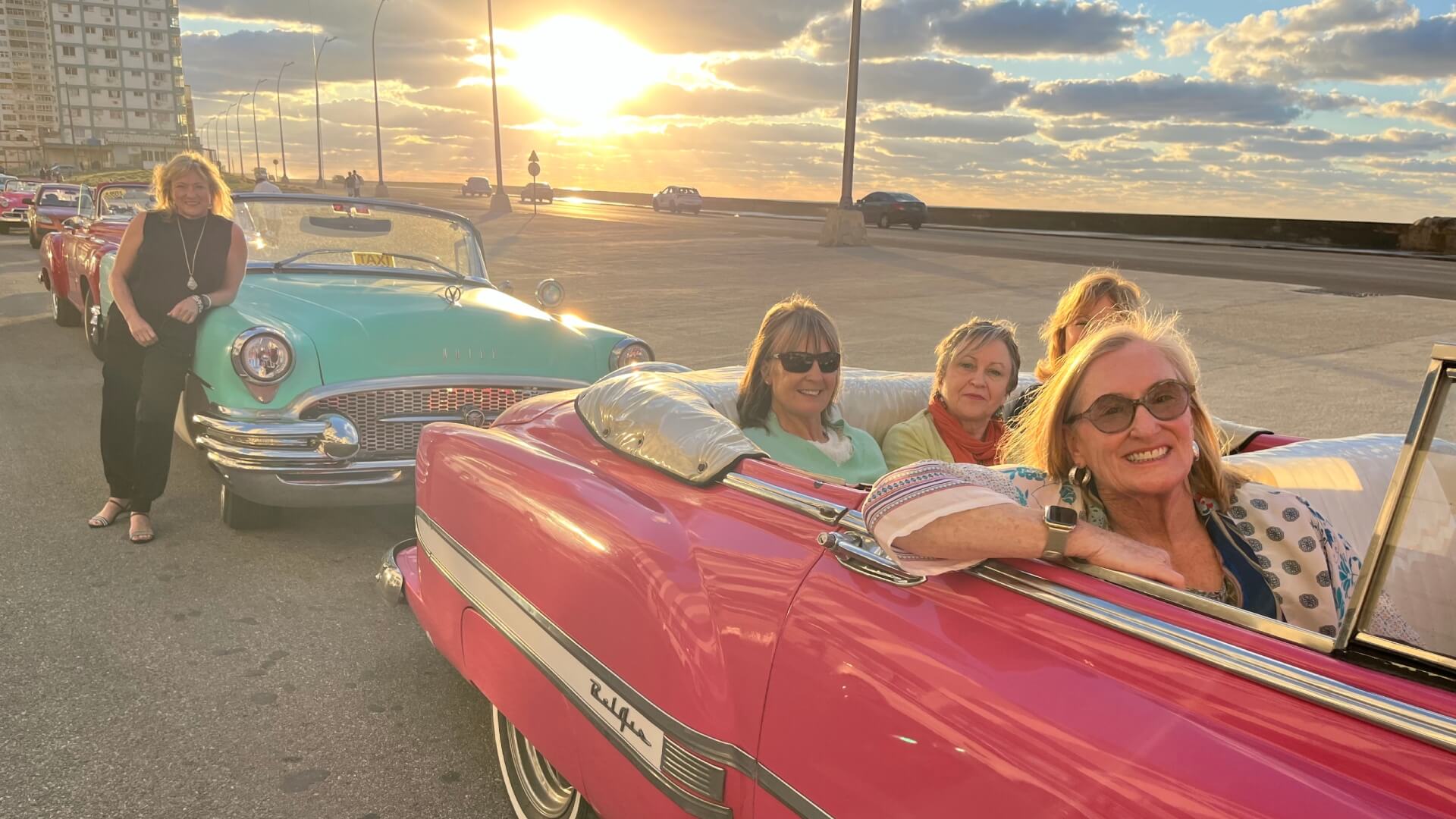

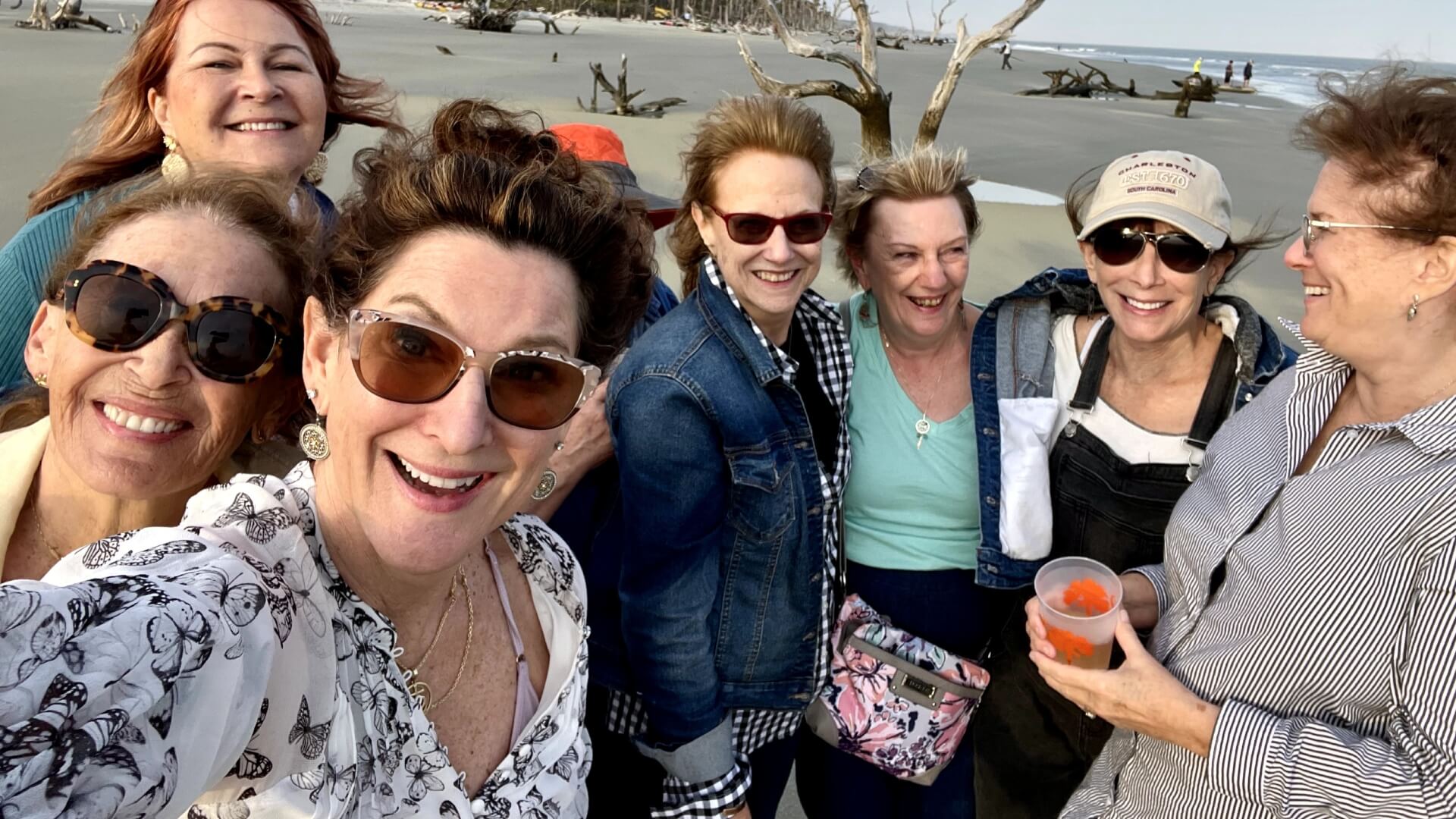








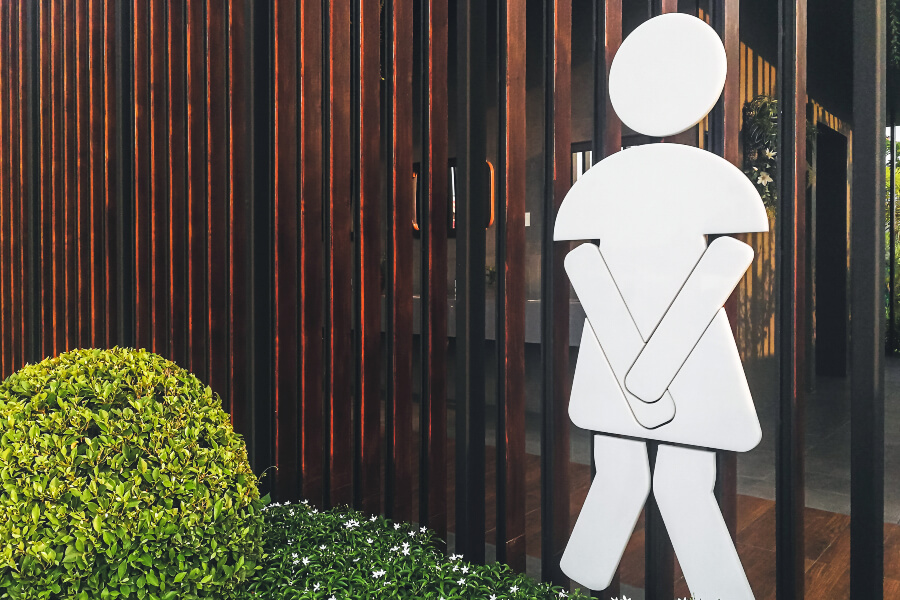







I noticed as soon as I was 30, I was always the shortest as a child. I have a sister 3 yrs older than me and 4 ins taller then I have my brother who is 2 yrs younger than me and also taller by 4 ins as well. When j was a child I thought that’s ok. Boys are usually taller than girls I kept telling myself. Both parents are 5’4 and 5’6. Me I take after my grandmother who was 4’10. Which she loved because everyone else were taller than us. I noticed by chance that I thought shd may be getting shorter has we were bang on like a pair of bookends. Shd must have been in her 50’s and I asked her how she is abit shorter than me. She explained that she noticed it a while back and being short it is more noticeable. Over time it got worse due to suffering osteoporosis she is now in her 70’s and apart from looking frail she as lost alot of her height because of this. Shd remembered her physicals at the health centre and how there were times she couldn’t get on the bed and they used a step stool. She as had loads of scans and was told nothing can be done. She can still walk and get around . It’s just her house isn’t made for her. She told me last year her height was just under 4’6 now. I am now 50 and my last check up I was measured at slightly under 4’9. So far no osteoporosis but I know I will get shorter.